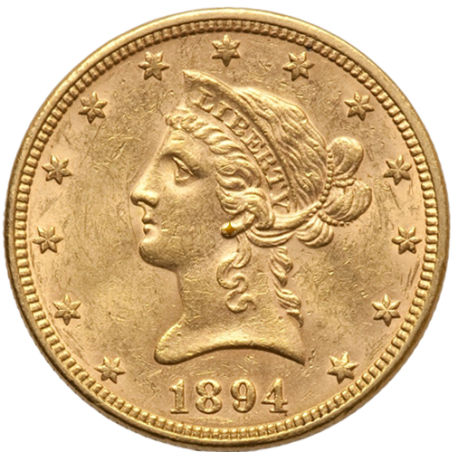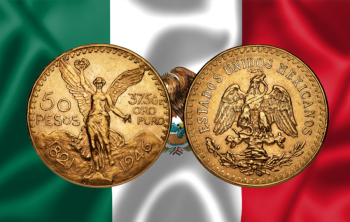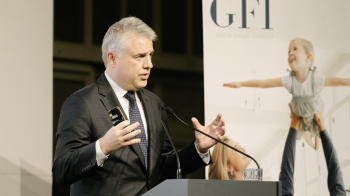How to BuySee the full summary
Buy at the counter
Liberty 10 dollar gold coin
-
15.05 g
-
16.71 g
-
 USA
USA
-
900.0‰
-
1838
-
1907
-
GOLD
-
American coins
Brief Summary of the $10 Liberty Head Eagle
The $10 Liberty Head Eagle is a ten-dollar coin that was struck and used in the United States of America between 1838 and 1907. It was designed by Christian Gobrecht and was the highest coin denomination in the US until US Mint created the Liberty Head double eagle in 1850.
It was the second eagle coin designed after the Coinage Act of 1792. The first eagle coin was the turban head, minted and used between 1795 and 1804. Then, in 1804, President Thomas Jefferson suspended the coinage of gold coins, and this suspension continued for 34 years until 1838 when the Liberty head eagle was designed and minted.
The coin was minted and used until 1907, when they were replaced by the Indian Head eagle, on the order of President Theodore Roosevelt.
History of the Coin
In June 1834, the US Congress voted to reduce the weight of all gold coins to match their face value. Before this, people were melting gold coins because their metallic value was higher than their face value.
When the suspension on the minting of eagles was lifted in 1838, the country looked to the US Mint to provide designs. Christian Gobrecht, who designed the coin, was not the Chief Engraver of the United States Mint at the time but was the acting Chief Engraver when the main boss fell seriously ill.
Gobrecht was the son of a German immigrant, and he drew his inspiration for the design from the portrait of Venus in Benjamin West’s painting Omnia Vincit Amor (Love Conquers All). His lady Liberty design would later become the prototype for other designs, like the large cent of 1839, the half eagle, and the double eagle.
Properties and Design of the Liberty Head Eagle
The $10 Liberty Head comprises 0.4838 oz of gold (90% purity) and 0.0538 oz of copper alloy (10% purity). It weighs 16.718 grams and has a diameter of 27mm.
The coin’s obverse side has the image of lady Liberty facing east with her hair pulled back in a bun. She is wearing a coronet, on which the word “LIBERTY” is inscribed. There are 13 stars surrounding her image, representing the 13 original states of the Federation. Beneath her image is the year of the coin’s production.
On the coin’s reverse side is an image of a heraldic eagle with a shield on its breast. The eagle's left claw holds three arrows, while the right holds a tree branch with leaves. The words “UNITED STATES OF AMERICA” surround the eagle, with “TEN D.” written beneath the eagle’s image.
There are three production designs of the Liberty Head eagle:
Type I (1838 - 1839)
This was the original design, and it had the image of lady Liberty facing slightly downwards with her ear covered with her hair,
Type II (1839 - 1866)
The second design had lady Liberty facing slightly upwards, with all other design aspects still in place.
Type III (1866 - 1907)
This was the third and final design of the Liberty Head eagle, which was used until its discontinuation in 1907. In this design, there is a banderole above the heraldic eagle’s head, with the words “IN GOD WE TRUST” inscribed.
This change happened due to the American Civil War in 1866, which caused people to ask that expressions of faith be put on all American coins. Therefore, all coins that could carry the words were mandated to carry them.
Discontinuation and Aftermath
In 1907, President Theodore Roosevelt discontinued the Liberty Head eagle and replaced it with Saint-Gaudens’ design of the Indian Head Eagle.
Today, surviving Liberty Head Eagle coins are sold worldwide as collectibles for thousands of dollars.






